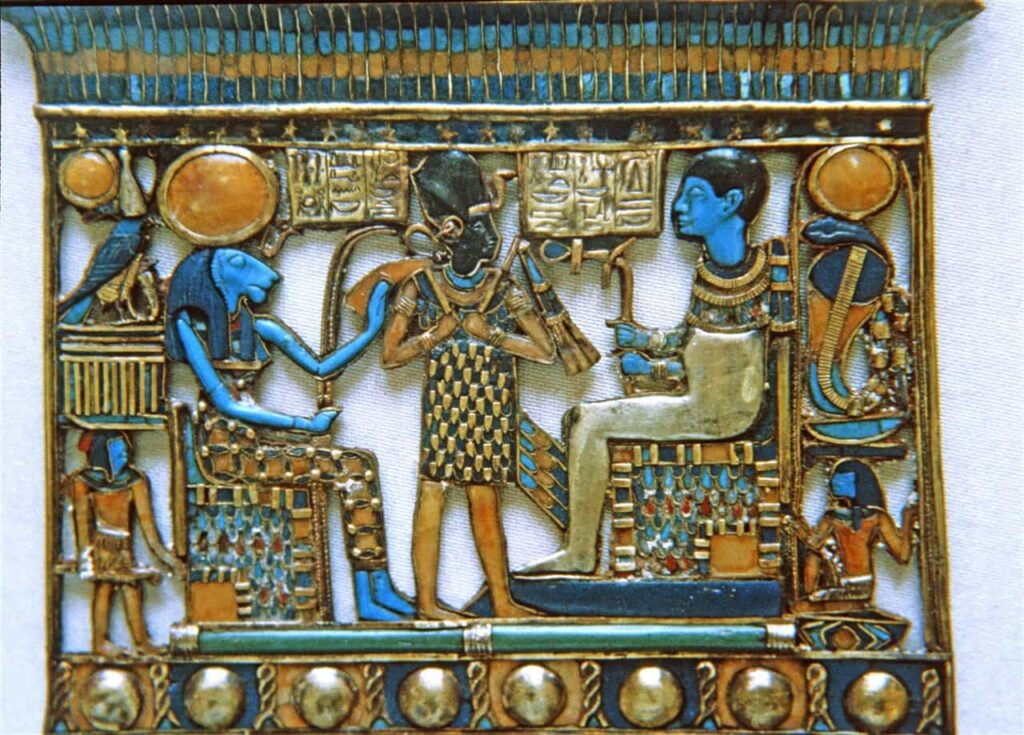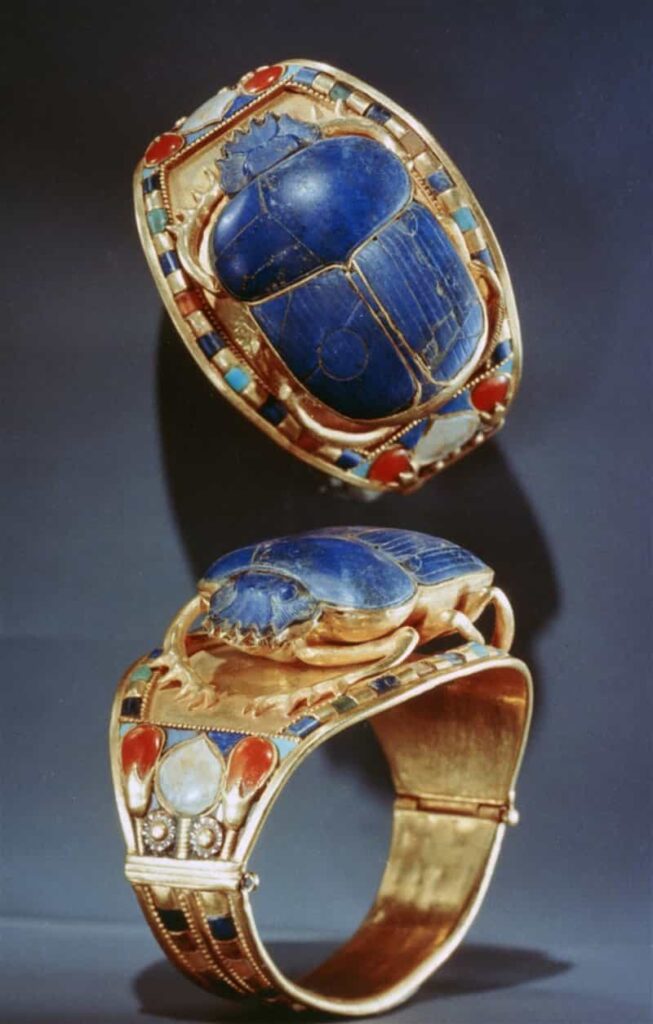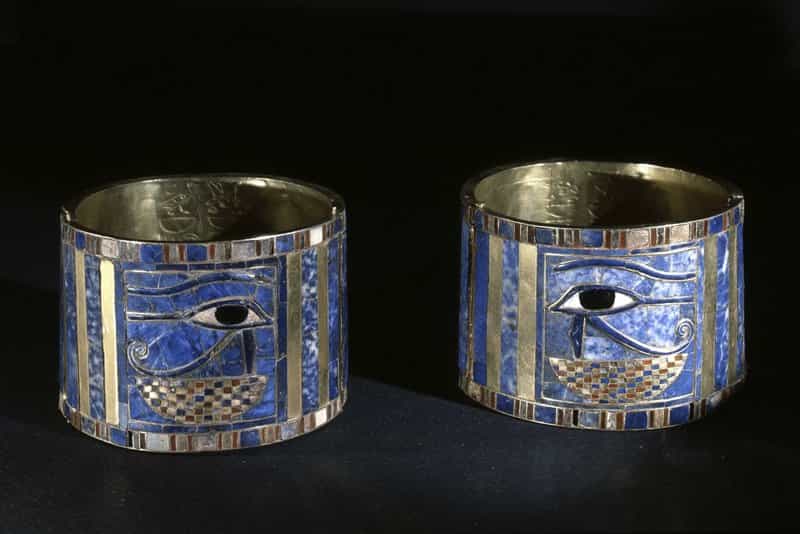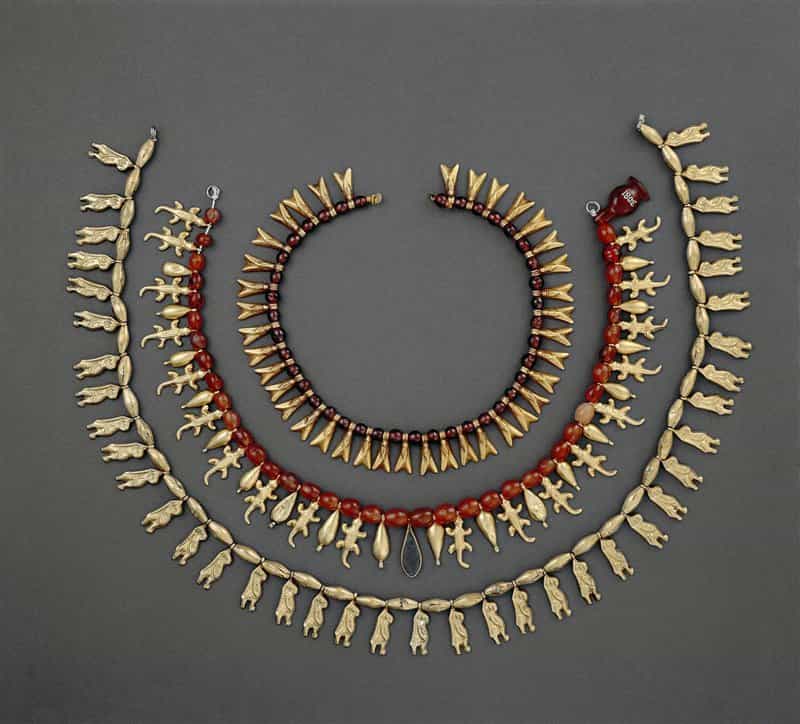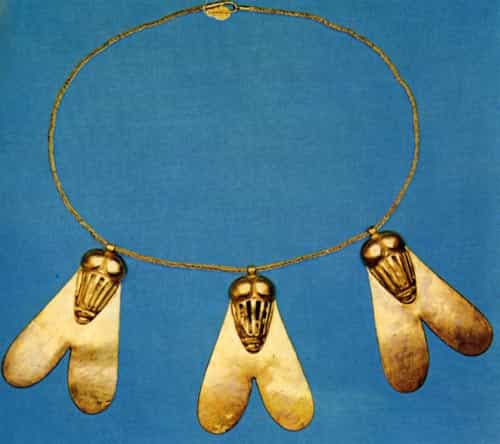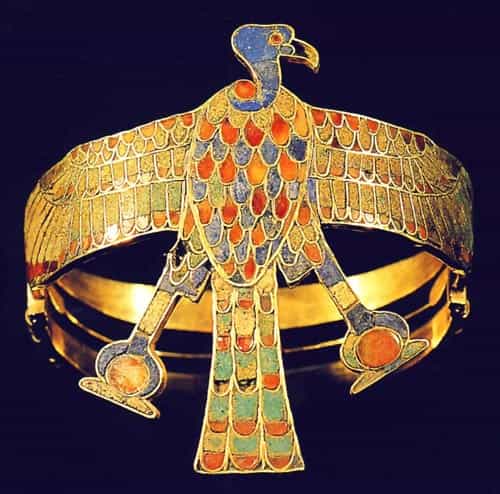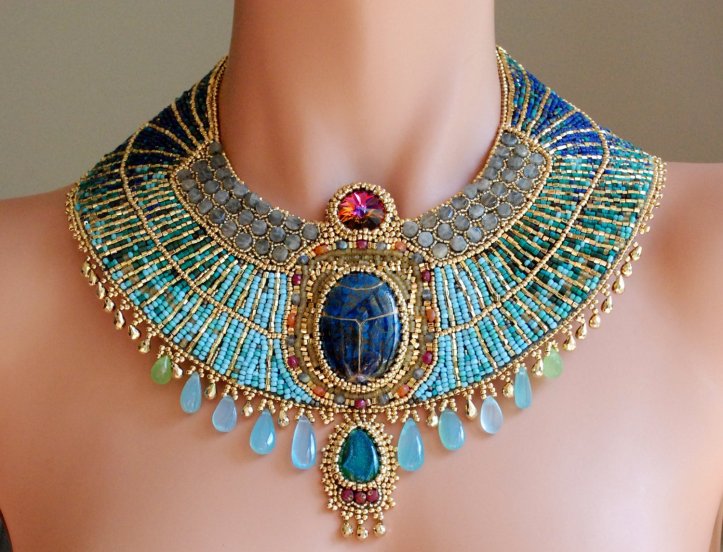Men and women in ancient Egypt wore all kinds of amulets that protected them in both earthly life and the afterlife. Jewelry played a fundamental role in the daily life and funeral customs of the ancient Egyptians.
Pharaohs and their relatives, the clergy, nobles, and anyone who could afford it adorned their bodies with jewels, which were only available to a minority and were therefore a symbol of their high social status.
But jewelry in ancient Egypt also had magical and religious power as protective amulets, effective both in life and in the afterlife. The ancient Egyptians created all kinds of jewelry, with which they adorned themselves from head to toe, including bracelets, bangles, rings, necklaces, pectorals, belts, amulets, anklets, crowns, diadems, and earrings.
Archaeology has shown that jewelry was used without distinction by men and women. Both appreciated noble metals in equal measure, especially gold and precious and semi-precious stones, which is why the ancient Egyptians dressed and embellished themselves with countless jewels both in daily life and on great occasions.
The “meat of the gods”
Many pieces were made of silver, electro (an alloy of gold and silver), copper, and bronze, almost always complemented with precious or semi-precious stones such as quartz, turquoise, lapis lazuli, carnelian, gemstones, alabaster, and amethyst, and colored glass. But the vast majority were made of pure gold.
This was the most appreciated metal by the ancient Egyptians, who attributed divine connotations to it; an inscription read: “Gold is the flesh of the gods […]. Remember what Ra’s words were when he began to speak: ‘My skin is pure gold’.”
Gold was mainly extracted from the deserts of Nubia, while silver was imported from the Near East and, from the 7th century BC, from the Iberian Peninsula via the Phoenicians.
Copper was extracted from the mines of Sinai, and tin, which was mixed with copper to produce bronze, was obtained from the Near East, the Cassiterides Islands, or the Iberian Peninsula.
On the walls of the mastabas, representations have been found that show the delivery of metals to the pharaohs as a result of the exploitation of mines, trade, tributes, and the booty of military campaigns.
The importation of precious metals allowed for the development of important jewelry workshops in Egyptian cities, particularly in Memphis, Coptos, Thebes, and Alexandria.
These workshops were promoted by the State, which introduced a long list of positions and specialists related to metalwork: workshop heads, artisan heads, goldsmith heads, chiselers, engravers, and blowers, among others.
Although they never signed their works, the goldsmiths enjoyed great prestige. Thanks to the reliefs of some tombs, we can see how their work was carried out and the type of tools they used, from burins, chisels, and hammers to blowpipes, bellows, ovens, and molds.
Jewelers developed increasingly sophisticated goldsmithing techniques, from fretwork and chiseling to embossing and, above all, engraving.
Goldsmith masters
Starting in the Middle Kingdom, the technique of granulation began to be used, which involves creating tiny spheres or grains of metal, specifically gold and silver, and attaching them to pieces of jewelry through welding.
The partition or cloisonné technique is one of the great achievements of ancient Egyptian art. It involved dividing the piece into small cells using a series of thin metal sheets that were fixed to the object through casting and later filled by embedding tiny pieces of vitreous paste or semi-precious stones such as jasper, lapis lazuli, gems, and malachite.
Thousands of pieces were made using this technique, including the extraordinary pectoral of Tutankhamun, which, among many other elements, features the image of a divinity with outstretched wings, all made of gold inlaid with lapis lazuli, carnelian, and turquoise.
The most precious gifts
The jewels of ancient Egyptians were more than just ornaments. Many of the large, heavy necklaces made of gold rings were gifts from kings to nobles as rewards for their military victories.
In a relief from the tomb of Ay, it can be seen how the prime minister of Akhenaten receives a Usekh necklace from the pharaoh, while he wears six gold link necklaces as a reward for his bravery.
One of the most important gifts that a high dignitary could receive was the so-called “Golden Fly of Valor.” It was the highest military decoration that could be awarded to a servant of the pharaoh. Its design was chosen because for the ancient Egyptians, flies symbolized persistence, so they wanted to reward tenacity in defeating the enemy.
Although it was normally awarded to men, it was also received by Queen Ahhotep, mother of Ahmose, the founder of the 18th Dynasty and the New Kingdom, for her role in the war against the Hyksos invaders.
The jewels were not just for show; they also had a religious and protective function. They could take the form of multiple deities, such as Ptah, the lioness goddess Sekhmet, the aureus (the protective cobra of royalty), and other gods such as Anubis and Isis.
They could also be in the form of symbols such as the udyat eye of Horus, the tiet knot of Isis, or the djed pillar of Osiris. There were also zoomorphic designs, with figures of bulls, gazelles, ducks, dogs, flies, fish, etc., and motifs from the plant world such as papyrus, flowers, especially the lotus, or fruits. The ancient Egyptians had a great fondness for the flora of their environment, seeing it as a symbol of beauty, new life, and paradise.
Protective amulets
The jewels of ancient Egyptians were more than just ornaments. Precious and semi-precious stones, such as lapis lazuli and turquoise, believed to be under the protection of Hathor, were thought to bring joy and happiness to the wearer.
The protective function of these jewels transcended earthly life as it was believed that they kept the deceased away from any danger while giving them strength and vigor for their afterlife. Gold and silver, in particular, as noble metals, were believed to preserve the body for eternity.
As a result, many tombs have been found to contain a large amount of jewelry as funerary equipment. One of the most common is the Khepri beetle, an incarnation of the sun that is reborn and therefore synonymous with eternal return and resurrection.
Many of these amulets were placed between the bandages of mummies, on the neck, torso, and heart, to facilitate their journey to the afterlife. No fewer than 143 objects were discovered in Tutankhamun’s mummy, including jewelry such as necklaces, pectorals, and udjat eyes.
Source: Esther Pons Mellado, National Geographic
